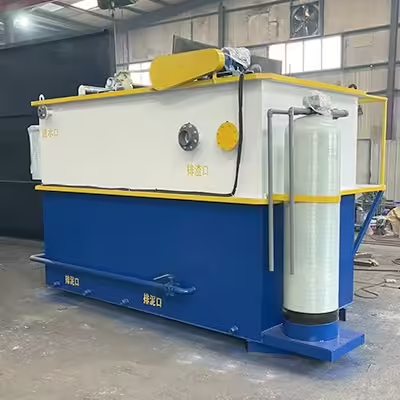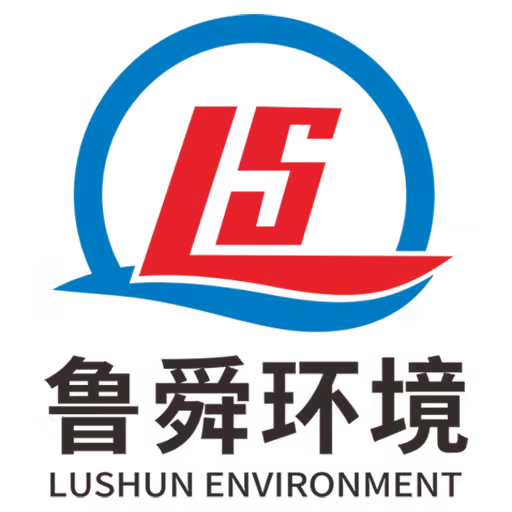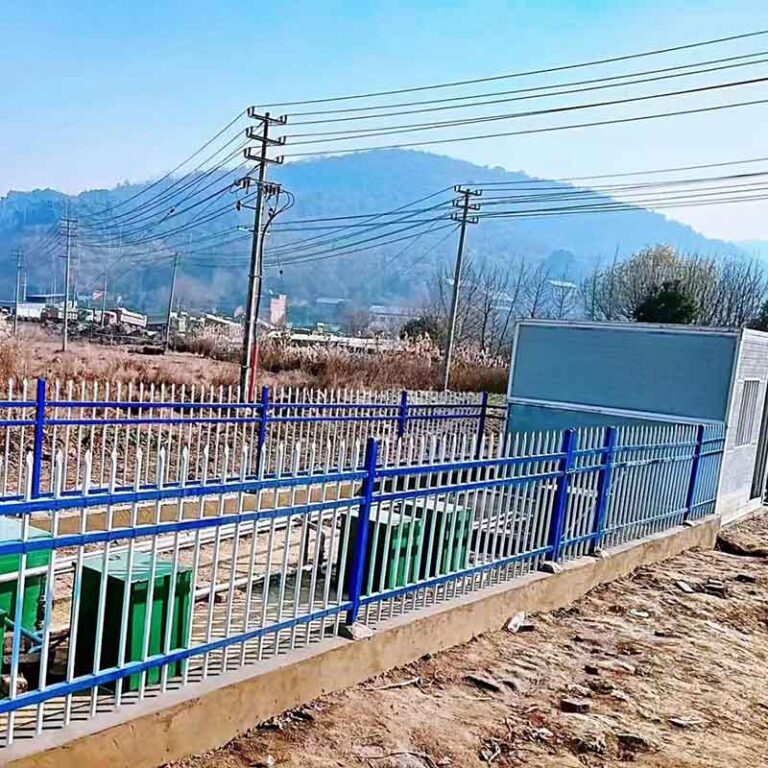Table of Contents
Introduction

An air flotation unit is a highly specialized piece of equipment used in the field of water and wastewater treatment. It is designed to remove suspended solids, oils, and other contaminants from liquid streams using a process known as dissolved air flotation (DAF). The air flotation unit operates by dissolving air into water under pressure and then releasing it in a flotation tank, where fine air bubbles rise through the liquid. These bubbles adhere to contaminants, causing them to float to the surface, where they can be mechanically skimmed off.
The technology behind the air flotation unit is both sophisticated and efficient. It allows for the effective separation of substances that are difficult to remove using conventional sedimentation or filtration methods. This makes it an essential component in a wide range of industrial and municipal water treatment systems.
In this blog, we will explore what an air flotation unit is, how it works, where it is applied, and why it is so effective in wastewater purification. We will also examine the global market demand, key industry players, and frequently asked questions.
How Does an Air Flotation Unit Work?
The working principle of an air flotation unit is based on microbubble flotation technology. Here’s a detailed breakdown of the operational mechanism:
Pressurized Air Dissolution
In the first stage, air is dissolved into water under high pressure. This process is usually carried out in a pressurized recirculation system, where a portion of the treated water is mixed with compressed air.
Bubble Formation
When the pressurized water is released into the flotation tank at atmospheric pressure, the dissolved air forms microscopic bubbles, typically in the range of micrometers. These tiny air flotation unit bubbles provide a large surface area for contaminant attachment.
Pollutant Attachment
As the bubbles rise through the water column, they come into contact with suspended particles, oil droplets, and colloidal substances. These contaminants become attached to the bubbles due to surface tension and hydrophobic interactions.
Buoyancy and Separation
Once attached, the combined air-particle aggregates (known as flocs) become less dense than water and rise to the surface, forming a layer of scum or froth.
Scum Removal
A mechanical scraper system removes the floating material from the surface of the air flotation unit, directing it into a sludge discharge area.
This highly efficient process allows the air flotation unit to achieve rapid and effective water clarification, making it ideal for treating high-turbidity or high-oil-content wastewater.
For more information, you can click:
- How to Spot a Fraudulent Air Flotation Machine Supplier
- 4 Features of a Top Sludge Filter Press Manufacturer
Applications Across Industries


The air flotation unit is a versatile system with a wide range of applications across various industries. Its ability to remove fine suspended solids, oils, and colloids makes it indispensable in numerous sectors. Here are some of the most prominent applications:
1. Food and Beverage Processing
In meat processing, dairy, and seafood industries, the air flotation unit is used to remove fats, oils, and proteins from wastewater. This not only prevents clogging in downstream systems but also reduces the biological oxygen demand (BOD) before biological treatment.
2. Petrochemical and Refining
Petrochemical plants use the air flotation unit to separate hydrocarbons and oils from produced water. It is particularly effective in removing emulsified oils, which are difficult to treat using conventional methods.
3. Textile and Dyeing Industry
Dyeing processes generate highly colored and chemically complex wastewater. The air flotation unit helps remove dyes, sizing agents, and suspended solids, often in combination with chemical coagulation.
4. Paper and Pulp Industry
In paper mills, the air flotation unit treats whitewater, removing fine fibers and fillers. This improves water clarity, reduces sludge production, and facilitates water reuse.
5. Municipal Wastewater Treatment
Municipal sewage systems use the air flotation unit as a pretreatment stage for high-load influents. It helps reduce the burden on biological treatment units and enhances overall system efficiency.
| Industry | Application of Air Flotation Unit |
|---|---|
| Food & Beverage | Removal of fats, oils, and suspended solids |
| Petrochemical | Separation of hydrocarbons and emulsified oils |
| Textile | Removal of dyes and colloidal particles |
| Paper & Pulp | Clarification of whitewater and fiber separation |
| Municipal | Pretreatment of high-strength industrial effluent |
| Tanneries | Removal of chromium compounds and emulsified oils |
| Metal Finishing | Oil and grease removal from rinse water |
This table highlights the diverse applications of the air flotation unit across various sectors, demonstrating its adaptability and effectiveness in handling different types of pollutants.
Advantages of Using an Air Flotation Unit
The air flotation unit offers several distinct advantages over traditional separation methods. These benefits make it a preferred choice in many water treatment applications.
High Efficiency in Removing Fine Particles
The air flotation unit can effectively remove particles as small as a few micrometers in size. This makes it especially useful for treating water with fine colloidal particles that would otherwise be difficult to separate.
Reduced Load on Downstream Systems
By removing a significant portion of contaminants upfront, the air flotation unit reduces the load on secondary treatment processes such as biological treatment and filtration. This leads to improved system performance and lower operational costs.
Low Chemical Consumption
Compared to coagulation-flocculation systems, the air flotation unit often requires fewer chemicals. When used in combination with coagulants, it can still achieve high clarification efficiency with minimized chemical dosing.
Compact Design
The air flotation unit is relatively compact compared to sedimentation tanks. This makes it ideal for installations where space is limited, such as urban wastewater treatment plants or industrial facilities.
Energy Efficiency and Automation
Modern air flotation unit systems are designed to operate with minimal energy consumption. Many units come with automated control systems that adjust air pressure, flow rates, and sludge removal cycles to optimize performance.
Improved Sludge Handling
The sludge generated by the air flotation unit is typically more concentrated and easier to dewater. This reduces the volume of sludge requiring disposal and lowers sludge handling costs.
These advantages make the air flotation unit a highly cost-effective and environmentally friendly solution for water and wastewater treatment.
For more information, you can click:
- Top 6 Smart Solutions for Filter Press Sludge
- 6 Ways Sludge Equipment Boosts Sustainable Development
Global Market Demand for Air Flotation Unit

The global market for the air flotation unit is experiencing steady growth, driven by increasing environmental regulations, rising industrialization, and the need for sustainable water management practices.
North America and Europe
In North America and Europe, the air flotation unit is widely adopted in municipal wastewater treatment, food and beverage processing, and the pharmaceutical industry. Stringent environmental regulations and growing awareness of water conservation have led to increased investment in advanced water treatment technologies.
Asia-Pacific
Countries like China, India, and Southeast Asian nations are witnessing rapid industrialization. This has led to a surge in demand for the air flotation unit in sectors such as textiles, paper, and petrochemicals. Additionally, growing urbanization and municipal infrastructure development are contributing to the expansion of the air flotation unit market in this region.
Middle East and Africa
In the Middle East, the air flotation unit is extensively used in oil and gas operations for produced water treatment. In Africa, increasing investment in sanitation and clean water access is driving the adoption of the air flotation unit in municipal and community-level wastewater treatment.
Latin America
Latin America is seeing a growing interest in the air flotation unit, particularly in the agricultural and food processing sectors. Countries like Brazil and Mexico are investing in water treatment technologies to meet environmental compliance standards.
Key Drivers of Market Growth
- Increasing industrial wastewater discharge
- Stricter regulatory compliance
- Growing demand for water recycling and reuse
- Technological advancements in flotation systems
The air flotation unit is not only a global necessity but also a rapidly evolving technology, with ongoing innovations aimed at improving efficiency, reducing energy consumption, and enhancing automation.
Conclusion
The air flotation unit plays a pivotal role in modern water and wastewater treatment systems. Its ability to efficiently separate fine particles, oils, and colloids makes it an indispensable tool across a wide range of industrial and municipal applications. Whether in food processing, petrochemicals, textiles, or municipal wastewater systems, the air flotation unit offers a reliable, efficient, and cost-effective solution for water purification.
With the global demand for clean water growing and environmental regulations becoming more stringent, the air flotation unit will continue to be a cornerstone of sustainable water management strategies. Its compact design, low chemical consumption, and energy-efficient operation make it a preferred choice for facilities aiming to optimize their treatment processes.
As technology advances, we can expect to see even more sophisticated and automated versions of the air flotation unit entering the market. These systems will further enhance water treatment efficiency while reducing operational costs and environmental impact.
FAQ
Q1: What is the main purpose of an air flotation unit?
The air flotation unit is primarily used to remove suspended solids, oils, and colloids from wastewater. It achieves this by using microbubbles to lift contaminants to the surface for removal.
Q2: Can the air flotation unit handle high-volume wastewater flows?
Yes, the air flotation unit can be designed to handle a wide range of flow rates, from small-scale municipal systems to large industrial operations.
Q3: Is chemical addition necessary when using an air flotation unit?
While some applications of the air flotation unit can operate without chemical coagulants, adding flocculants or coagulants can enhance the removal efficiency of colloidal particles and oils.
Q4: What maintenance is required for an air flotation unit?
Routine maintenance includes checking air compressors, pumps, and scraper mechanisms. It is also important to monitor water quality and ensure proper system calibration.
Q5: How does the air flotation unit compare to sedimentation tanks?
The air flotation unit is more effective in removing fine particles and oils than sedimentation tanks. It also requires less space and provides faster separation.
Q6: Can the air flotation unit be integrated with other treatment systems?
Yes, the air flotation unit is often used in conjunction with biological treatment, filtration, and disinfection systems to achieve comprehensive water purification.
Q7: What are the energy requirements of an air flotation unit?
The energy consumption of the air flotation unit varies depending on the system design and operating pressure. However, modern units are designed for energy efficiency and often include automated controls to optimize performance.
Q8: Is the air flotation unit suitable for oily wastewater treatment?
Absolutely. The air flotation unit is particularly effective in removing emulsified oils and hydrocarbons, making it ideal for wastewater from refineries, metalworking, and food processing.
Q9: What types of industries benefit most from using an air flotation unit?
The air flotation unit is widely used in food and beverage, petrochemical, textile, paper and pulp, and municipal wastewater treatment industries.
Q10: How long does an air flotation unit last?
With proper maintenance, the air flotation unit can operate efficiently for 15–20 years or more, depending on usage and environmental conditions.
Summary and Final Thoughts
In conclusion, the air flotation unit is a vital component of modern water treatment infrastructure. It offers a highly efficient method for removing contaminants that are difficult to address with traditional techniques. Its versatility across different industries, combined with its environmental and economic benefits, ensures that the air flotation unit will remain a key technology in water purification for years to come.
Whether you are managing an industrial facility, overseeing municipal wastewater treatment, or involved in environmental engineering, understanding the capabilities of the air flotation unit can help you make informed decisions about water treatment strategies. As global water challenges continue to evolve, the role of the air flotation unit in ensuring clean and sustainable water resources will only become more critical.
Let’s Stay Connected! 🌍
Thank you for reading!
If you found this guide helpful or have questions about filter press machines, I’d love to connect and hear your thoughts.
📘 Follow me on Facebook for expert insights, behind-the-scenes updates, and real conversations with our global community.
Let’s continue exploring, learning, and growing—together! 🚀






